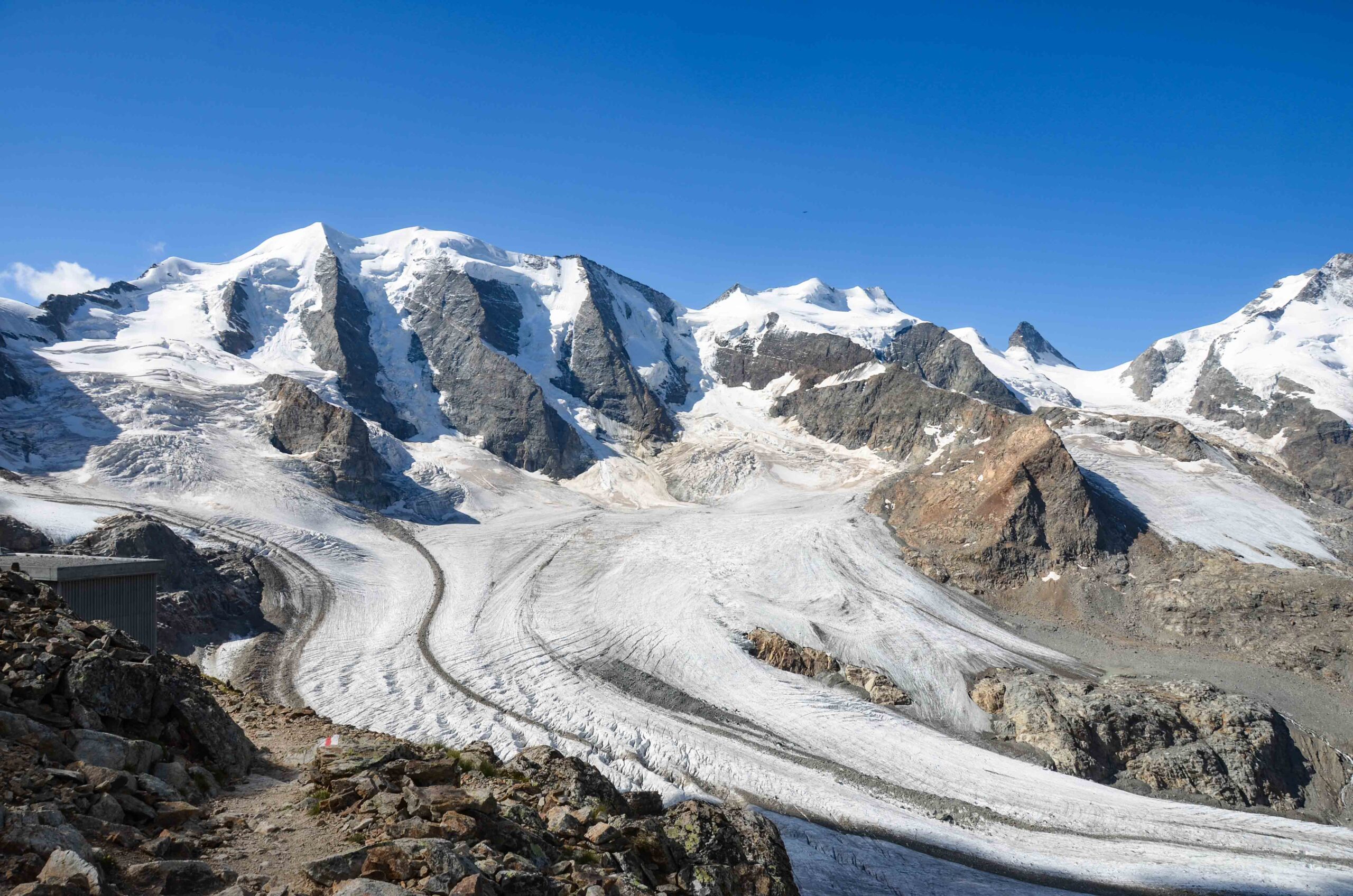
Längerer Beitrag – schneller Überblick:
Those who know us know that we really keep our eyes and ears open everywhere when it comes to climate and environmental protection. We may not be able to save the world, but we can perhaps contribute a little to ensuring that this earth we love to travel around warms up a little more slowly. And so that it remains liveable for the generations after us.
On the one hand, it is about biodiversity, which we are slowly losing. This is called biodiversity. Then it's about temperatures and the water balance. Oh, and so much more.
During our holiday in Graubünden, we visited various exhibitions on the topic of glaciers, glacier melt and water balance. I was surprised how well and, above all, critically-reflectively we were informed there.
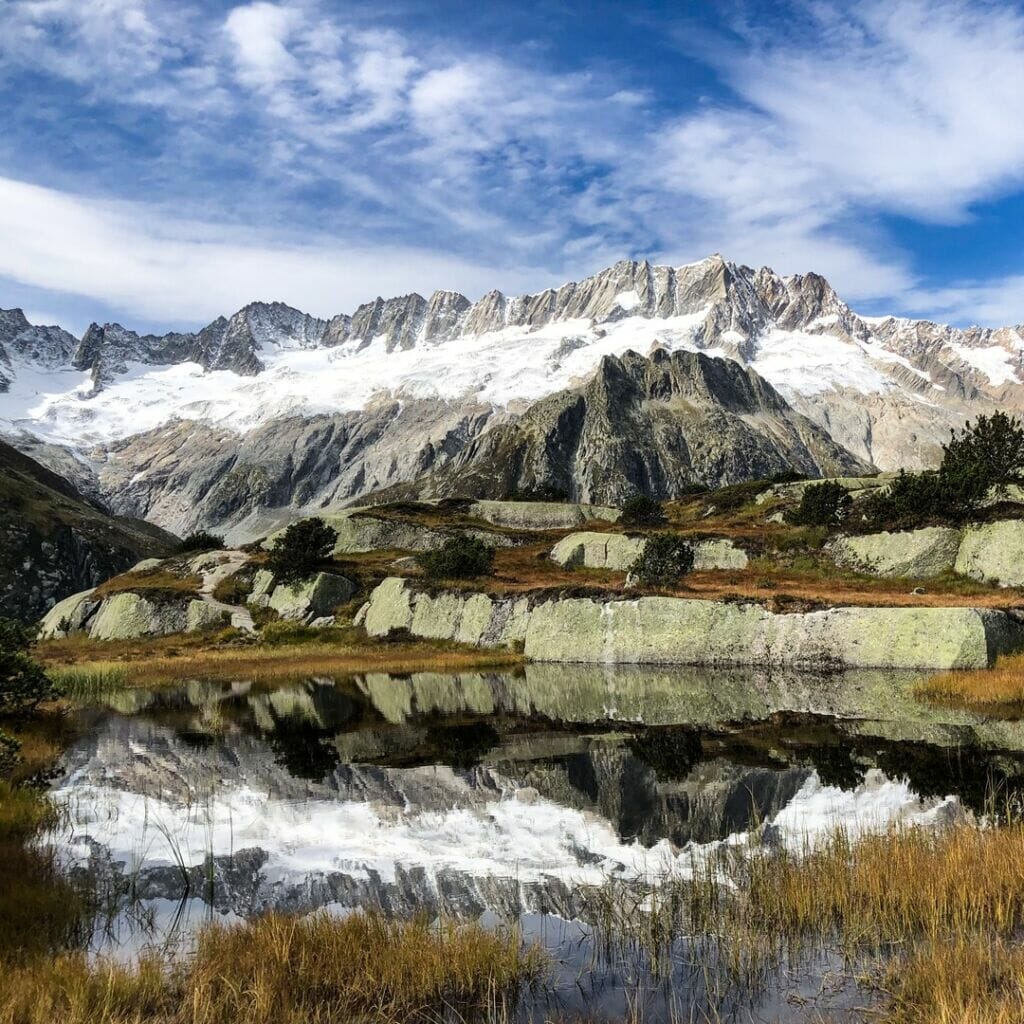
Review
I still remember 1 August 2008 well, my first Swiss birthday in the mountains. The Susten glacier, which is actually called the Steingletscher, was clearly visible and didn't come all the way down to the farm, where we had a cosy brunch, sat on benches and listened to country music.
This year, 15 years later, the Steingletscher only bobs far up near the summit, retreating a few metres year after year. While I'm talking to our daughter on the phone, she says: "I don't think my children will live to see glaciers. Will they, Mum?" Sadly, I have to nod, or at least admit that they will.
Biodiversity
The Alps are home to a great many different plants. About 8 per cent of them are specially adapted to life in the high mountains. But what happens to these plants when the climate changes?
One example is the 3410 metre high Piz Linard near Zernez. In 1835, there was only one plant species up there, the alpine man's shield. By the 1990s, nine more species had been added. Since 1990, there have even been 16 species. But not only on Piz Linard. Researchers have found that the number of plant species on the mountain peaks of the Alps has increased by 41 percent in the last 100 years.
That sounds good at first. But there is also a problem. Because now plants are also coming to the mountains that are found everywhere else, for example the dandelion. These new plants take up space from the special high mountain plants. And because there is less space for plants with every metre of altitude, the high mountain plants have less and less space to live. They are pushed back and could disappear altogether at some point. Then the special plants that only live in the high mountains would also no longer exist.
Details incl. further links to the project "Gipfelflora": https://www.wsl.ch/de/projekte/gipfelflora.html
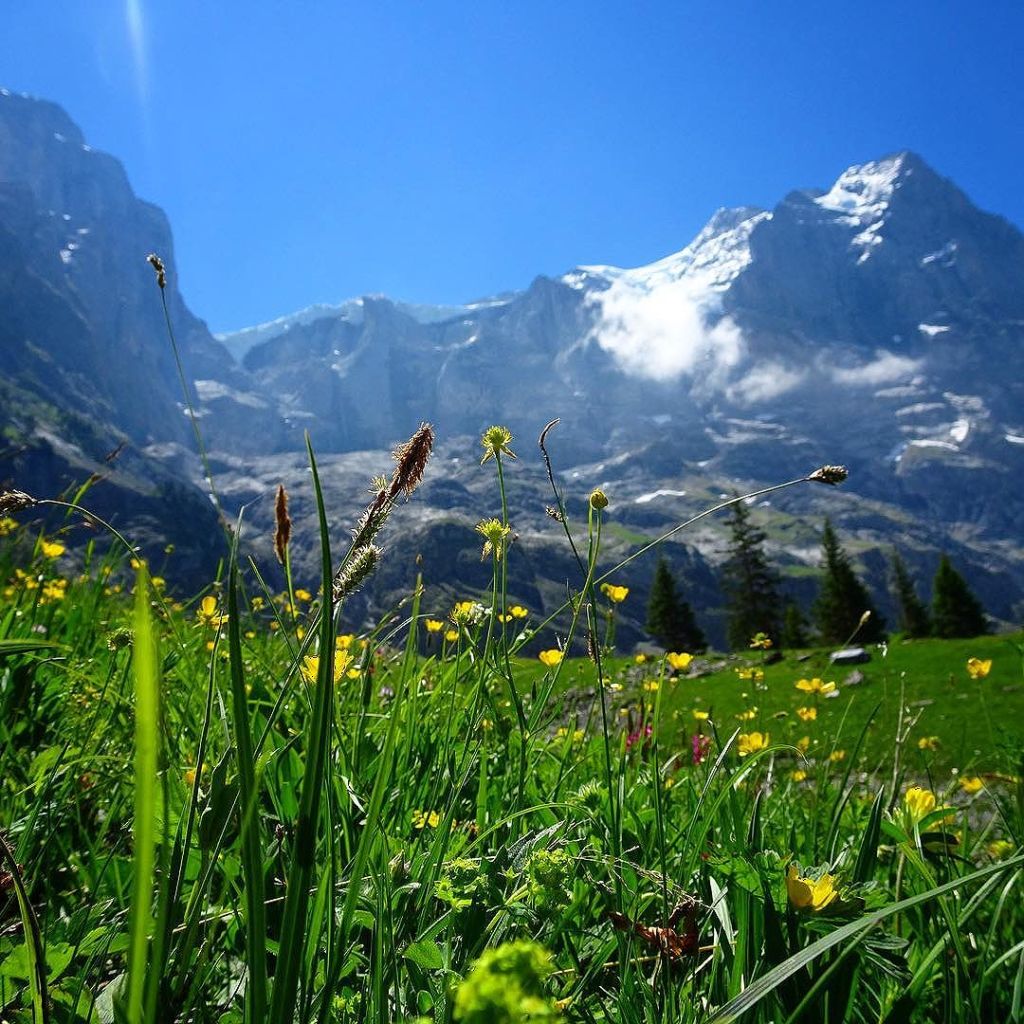
The Alps are Europe's water castle
"The Alps are the water castle of Europe" is a metaphor that aims to explain the importance of the Alps as one of the most important sources of water in Europe. There are many rivers and lakes in the Alps and a lot of snow and rain falls. In addition, the glaciers in the Alps store large amounts of water that run off during dry periods, thus ensuring a steady supply of water.
The rivers that rise in the Alps, such as the Rhine, the Rhone, the Danube and the Po, flow to many parts of Europe and supply water to many people and agricultural areas. Therefore, this mountain range is often called the "water castle of Europe".
A little fun fact on the side: Our" Aare also rises in the Alps and then joins the Rhine somewhere. Quote Jungfrau-Zeitung: "There is a rule that when one river joins another, it is always named after the one with more water, the main river. So the Rhine should actually be called Aare, because it has 50 per cent more water when it joins the Rhine at Koblenz. This would have numerous effects on many place names, such as Weil an der Aare, Aareland-Pfalz or Nordaare-Westfalen."
Glaciers can store large amounts of water because they are actually made of frozen water. They are formed when snow falls in winter and does not melt completely in summer. Over many years, the snow accumulates and is pressed into ice by its own weight.
Much of the water stored in the glaciers is trapped in this solid, icy form. When the climate gets warmer, the glaciers melt and release the stored water, which then flows down to the valley in streams and rivers. In this way, glaciers supply many regions of the earth with fresh water.
Glaciers thus play a crucial role in water supply, storing water during cold periods and releasing it during warmer periods when water is often scarce.
Here is an entertaining two-and-a-half-minute video about the so-called moated castle: https://www.youtube.com/watch?v=AnEHRRVaBuw&t=3s
What happens when the glaciers in the Alps melt?
Calculations show that glaciers in the Alps could melt severely. By the end of this century, most glaciers below 3500 metres could be gone if the earth continues to warm. Even if the climate remains the same, more than half of the ice could be lost. Glaciers are important because they carry water to rivers in summer. In the heatwave summer of 2003, we saw that without glaciers, streams almost dried up.
Glacier melt in Switzerland
In Switzerland, the glaciers have been melting for a long time. Since 1850, half of the ice has disappeared. Because it is getting warmer, the glaciers melt faster in summer and it rains more instead of snowing.
If the climate remains as it is today, the glaciers will lose another half of their ice in the next few decades. But experts expect it to get three degrees warmer by 2085. That will cause the glaciers to melt sharply: By 2100, only 20 to 30 percent of the ice could be left, especially in the Rhone Valley, where Switzerland's largest glacier, the Aletsch Glacier, is located.
Less snow
Today, 40 percent of the water in Switzerland comes from snowmelt. Due to climate change, this share could drop to 25 percent by 2085 because it snows less. As a result, the water will run off more quickly. We can already observe that the floods come earlier in spring and are no longer as high.
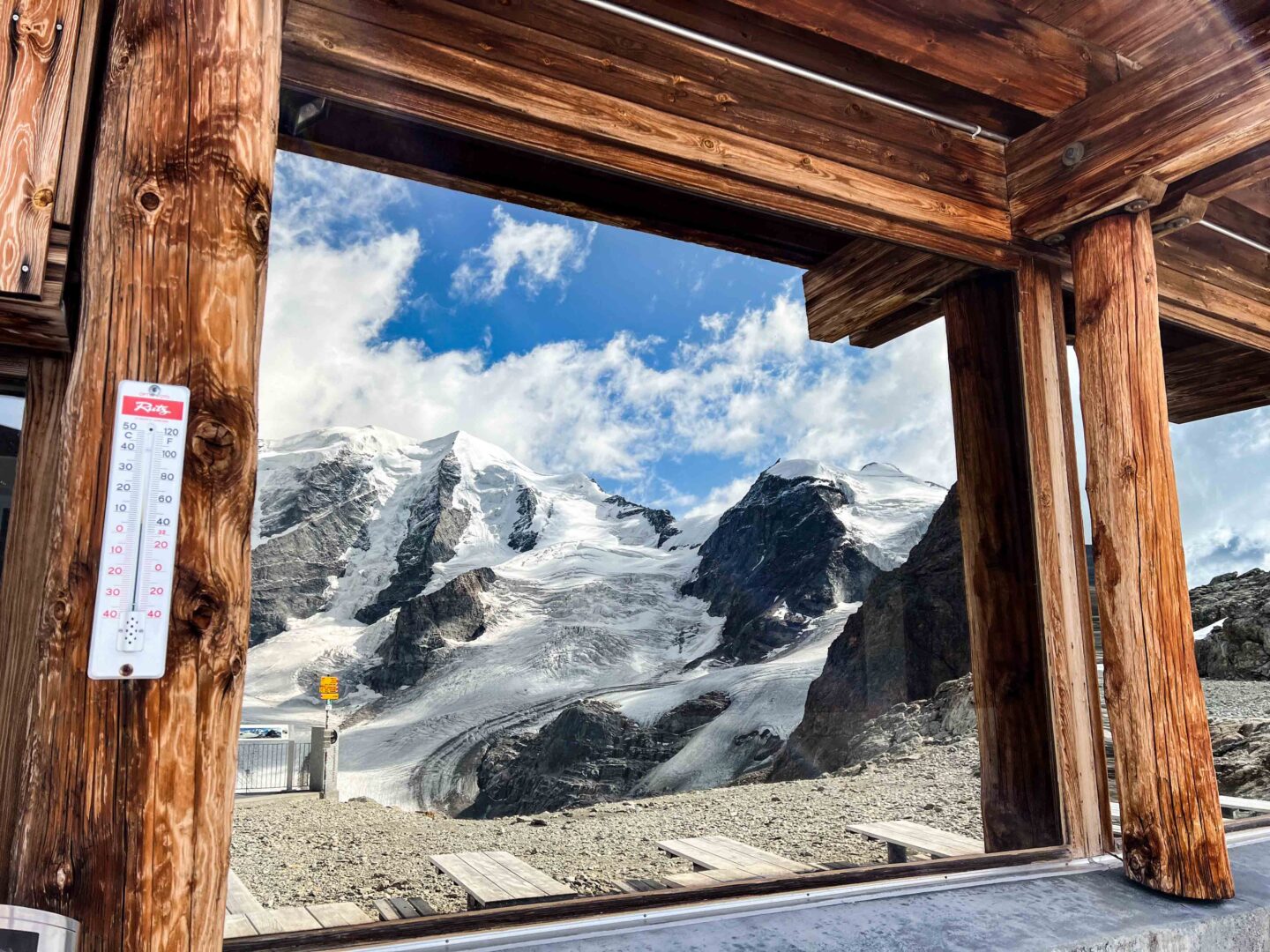
Density values of different snow and ice types
Fresh snow 50-70 kg/m3
Wet fresh snow 100-200 kg/m3
Old snow 200-300 kg/m3
Floating snow 350-400 kg/m3
Firn 400-830 kg/m3
Slush 700-800 kg/m3
Glacial ice 800-910 kg/m3
So it's quite clear: glacier ice has it all!
Around the Diavolezza
Researchers have found that a permanent snow cover of 0.8 km² on the Morteratsch glacier could significantly slow down glacier retreat. This could be achieved within 10 to 15 years. The meltwater flowing off the glacier is collected and returned to the glacier as snow. This process is called "meltwater recycling".
Since 2015, a team of scientists has been intensively researching how permanent snow cover affects glaciers. In numerous studies and field tests, they were able to show that under today's climate conditions, glacier growth would even be possible within 10 years. The prerequisite for this would be that 10 % of the glacier surface is permanently covered with snow.
Over the last 170 years, the Morteratsch glacier has receded by 3 kilometres, an average of 44 metres per year. A closed snow cover in summer could reverse this process. This snow cover reflects the sunlight and thus protects the glacier. This protective measure is called "MortAlive" and is part of an exhibition at the foot of the Diavolezza.
Under current climate conditions, the glacier could grow again within ten years, provided that a large part of its surface remains permanently covered with snow. Even with rising temperatures, MortAlive could slow the glacier's melting process. More on the topic at mortalive.ch.
The exhibition shows possible developments of the glacier.
All possible scenarios show that the glacier shrank from 1875 to 2020. During this period, the temperature in the Engadine has risen by almost 2°C. There are various possibilities for the future (2020 to 2100):
A // If the world works hard and greatly reduces CO₂ emissions, the temperature rise in the Engadine could be limited to 1-2 °C.
B // If the atmosphere continues to warm as it has done so far and CO₂ emissions are not reduced, the temperature could rise by a further 4-6 °C.
C // If greenhouse gas emissions are reduced somewhat, but not stopped completely, the temperature could rise by a further 2-3 °C.
D // When the temperature rises by another 2-3 °C and the glacier tongue is artificially snowed.
These scenarios are based on the maximum possible amount of water that could actually be present.
There is also a fantastic 3D animated information session, which is really impressive and impresses us as tech nerds even more! The exhibition is at the foot of the Diavolezza gondola lift and is free. A short stop is really worth it!
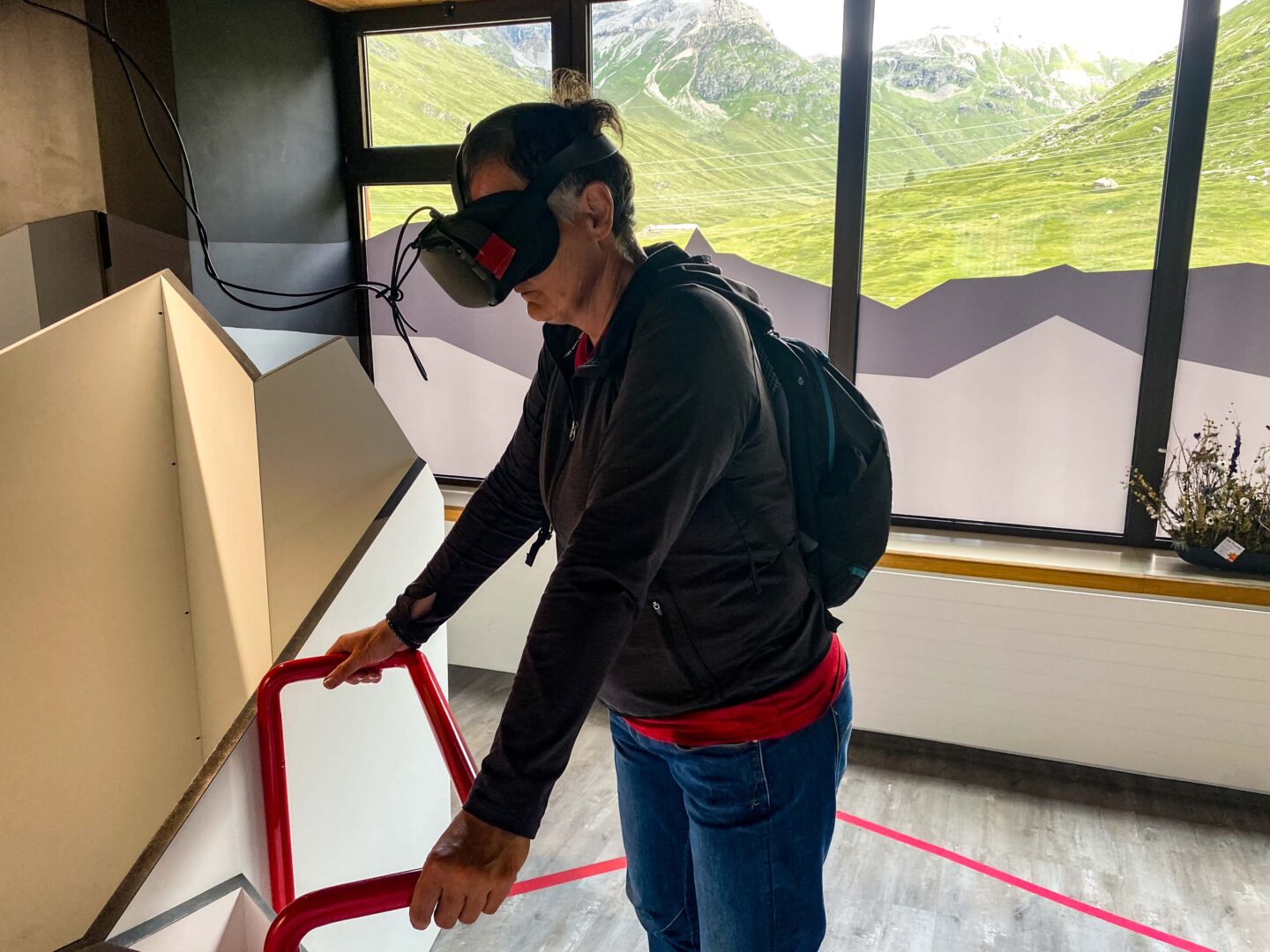
So what can we do?
There are many ways in which we can make a difference through our actions:
Reduction of greenhouse gas emissions: This is the most direct way to combat global warming. Greenhouse gases are mainly produced by burning fossil fuels such as coal, oil and natural gas. We can reduce emissions by using renewable energy, using energy more efficiently and planting trees that capture CO₂ from the atmosphere. There would be thousands more ideas, really!
Nutrition: A change in diet can also make a big difference. A plant-based diet generally produces less greenhouse gases than a diet with a lot of meat and animal products, including eggs and dairy products.
Sustainable mobility: Car and air traffic are among the main sources of greenhouse gas emissions. Using public transport, cycling or walking instead of driving can help reduce these emissions. Our goal of reducing our annual mileage to 2/3 of previous years still stands. We hope we can meet it.
Energy efficiency: Energy consumption can be reduced through energy-efficient living and working. This includes measures such as insulating buildings, using energy-saving appliances and switching off appliances when they are not in use.
Education and enlightenment: The more people know about the causes and effects of global warming, the more likely they are to take action against it.
Policy measures: At the political level, it is important to pass laws that limit greenhouse gas emissions and create incentives for renewable energies and energy efficiency. Here we can vote the "right way" or sign petitions. There is also a lot that can be done in contact with politicians.
Whoever feels called to one or more points: Please stay tuned! And thank you for it!
Sources, all retrieved 2.8.2023
https://www.unifr.ch/geo/cryosphere/en/
https://www.oxfam.de/unsere-arbeit/themen/klima-ressourcen-schuetzen
https://www.unifr.ch/news/de/20852
https://gletscherg2h.wordpress.com/gletscheralswasserversorgung/
https://mortalive.ch/wissenschaft
https://www.raonline.ch/pages/edu/nat/glacier02b000.html
https://www.swisseduc.ch/glaciers/earth_icy_planet/glaciers04-de.html
https://de.wikipedia.org/wiki/Steingletscher
https://www.wsl.ch/de/projekte/gipfelflora.html
Thank you for reading our sustainability thoughts. Every two to three weeks on Mondays we write something about the possibility of living future-oriented in the van. We try to shed light on different areas and hope to do so without pointing fingers.
Our focus is on the joy of van life and the many possibilities. We want to avoid the usual doomsday and renunciation communication.
You can find all the sustainability posts collected in the Category Future.
You think this could also be of interest to others? Then you can download the Share post quietly. By e-mail or however you want to do it.In addition, if you haven't already done so, you can use our Newsletter subscribe. Here you will receive all our experiences in your mailbox whenever we publish something new or once a week on Fridays: live-pur.ch/newsletter
Or you can just subscribe to our Sustainability articles. You can do that right here:
We are also very happy to hear your views, your tips or your questions. Just comment on the post!
Best regards - Heike & Gerd